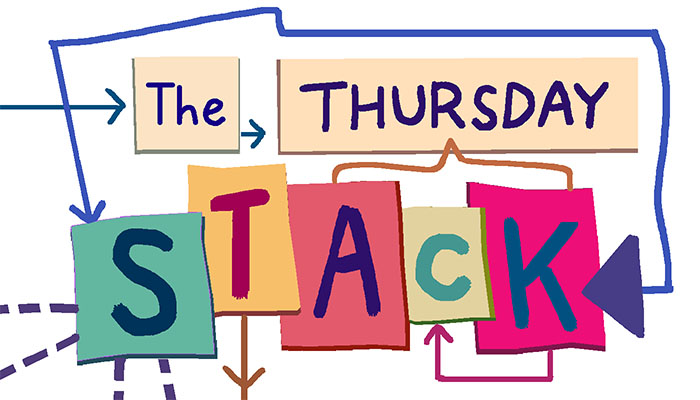As already reported, the product roadmap at Episerver reflects an emphasis on creating personalized customer journeys. That means content recommendations as well as product recommendations, an initiative which is likely to be compelling for B2B users, as well as retailers offering high consideration products and services.
At Ascend 2019, I asked VP product management David Bowen to guide me through some of the details. “Content recommendation is a service we’ve had in the market for a while. In the same way as the product recommendations, it listens to all the interactions from customers, which products they buy; content does the same thing with content exposure and the goal of conversion. The difference with commerce is that there’s only one conversion —
the order; with content, there might be multiple conversion goals, like registering for a newsletter, submitting a request for a demo, but also engagement. We recommend pieces of content to push users to the goal the system thinks they’re driving to.”
The offering is being enhanced “quite significantly,” said Bowen, this year and next year with deeper models surfacing more insight. Bowen agreed that this is not just for B2B use cases. “For example like consumer electronics. If you can see a customer interested in one area, the system will learn that, both from a product perspective and a supporting content perspective —
like buying guides, etc. You can build segments, and personalize to them, or reach out with a mail campaign or other messaging.”
Episerver is also deploying NLP to analyze content. “Initially that’s helping to understand the content by extracting topics. We can surface that to editors (it’s something on the roadmap) where can say the system thinks this content is about these topics, and is likely to convert with this customer segment. The NLP is already there, it’s learning based on the models we’ve trained, and surfacing it to editors in context is where we’re going.”
Performance metrics for content, determined according to selected conversion goals, will also be surfaced in the analytics. “It;s released for commerce customers. We are working on the content version, and that will be released in the next year.”
Another related roadmap item, predictive visitor clusters: “These are customer segments likely to convert towards a particular goal.” Based on behavior and traits, the system will identify customers to target, and the channels to use.
For CMS mavens, Episerver is also working on a “hybrid headless” offering. Put simply, headless CMS allows content to be created once, then pushed out to any channel or device; it differs from a traditional CMS, like WordPress, in that it’s not rigidly templated for web browsers. Episerver’s strength, however, has been in WYSIWYG-style, contextual content creation, but, said Bowen, it also wants to support the headless model. “We do that in that we have the application with the WYSIWYG editing capabilities, and all the tools for authoring and workflows — but you also have the content delivery API that allows you to consume ciontent and commerce in a native application or other channel, or build a progressive web application. You can still manage these experiences in Episerver. You can load up those pieces of content and look at them in Episerver.”
To put it more simply: “The hybrid model is that you’re not pure headless, but you can still deliver headless content that relies more heavily on the client device” — in other words, where the content ends up.
Finally, a presentation at Ascend by Ed Kennedy (senior director, commerce) not only showed that mobile traffic has finally outgrown desktop, but also warned that that can be bad news for brands who convert better on desktop than mobile. The hybrid headless strategy is part of the way Episerver is addressing this: “The delivery API serves modern delivery experiences as well as native applications.” — Kim Davis
Episerver covered DMN’s expenses to attend Ascend 2019
|
Read our take on Headless CMS
|
**********
Next up Salesforce, with broad AppExchange announcements affecting marketing, commerce, sales, and service. The cloud marketplace now boasts a remarkable 5,000 listings of applications which integrate with Salesforce. Today’s announcement includes curated collections of the latest apps for commerce, for CPQ and billing, and for robotics, as well as Datorama partner solutions.
As Woodson Martin, GM of AppExchange, said in a release, “(c)onsumer demands are evolving rapidly and our partners are critical to delivering customer success,” a perspective which confirms the trend of the major CX players seeking to establish open eco-systems rather than build or acquire point solutions to address needs which are changing at blinding speed.
You can find listings and details on the new apps here. — Kim Davis
**********
And last week, Microsoft announced the acquisition of Mover, which supports cloud file migration from Box, Dropbox, Google Drive and others. The move boosts efficiency and service for workplaces that use Microsoft’s own OneDrive and SharePoint offerings.
For insight into this news, I checked in with Nintex, the largest global partner of SharePoint, and a Microsoft partner of the year.
Neal Gottsacker, chief product officer, told me: “The acquisition of Mover reflects Microsoft’s continuing focus on making it quicker and easier for enterprises to shift data and documents from their existing cloud providers to Microsoft infrastructure. Enterprises should be aware, though, that consolidating on one cloud provider isn’t the end of the story. They also must focus on process management and automation to truly optimize their cloud strategies.” — Chris Wood







